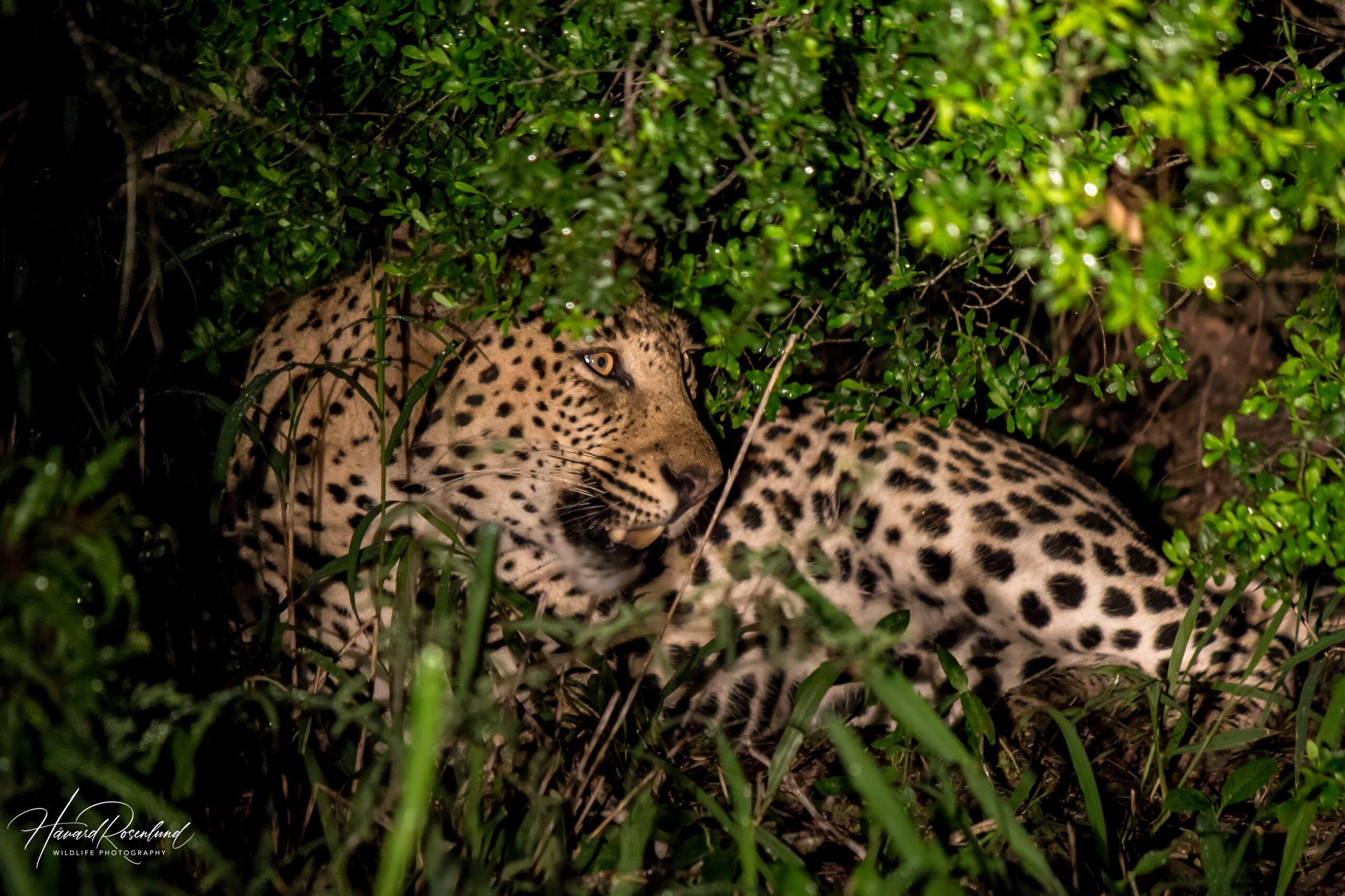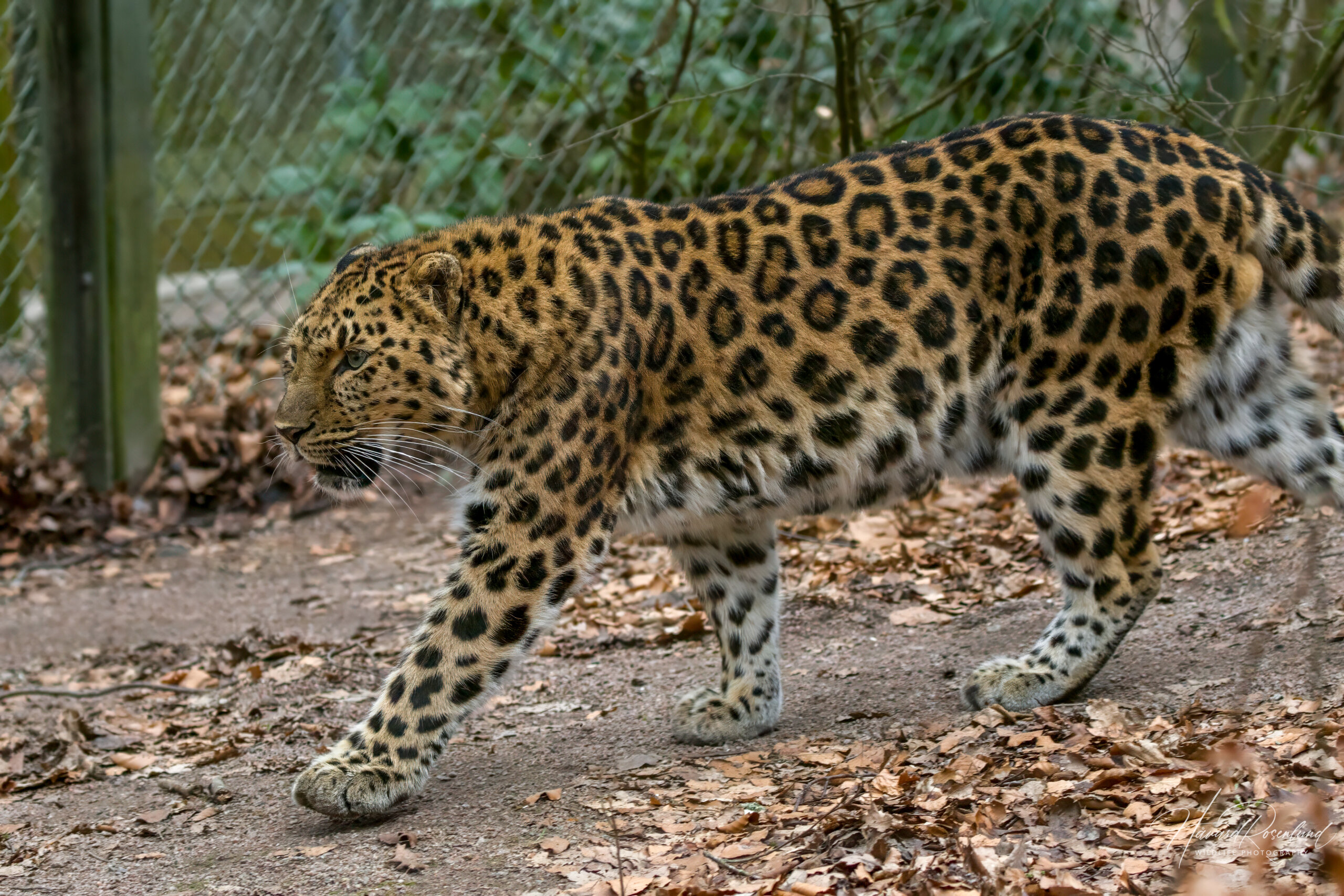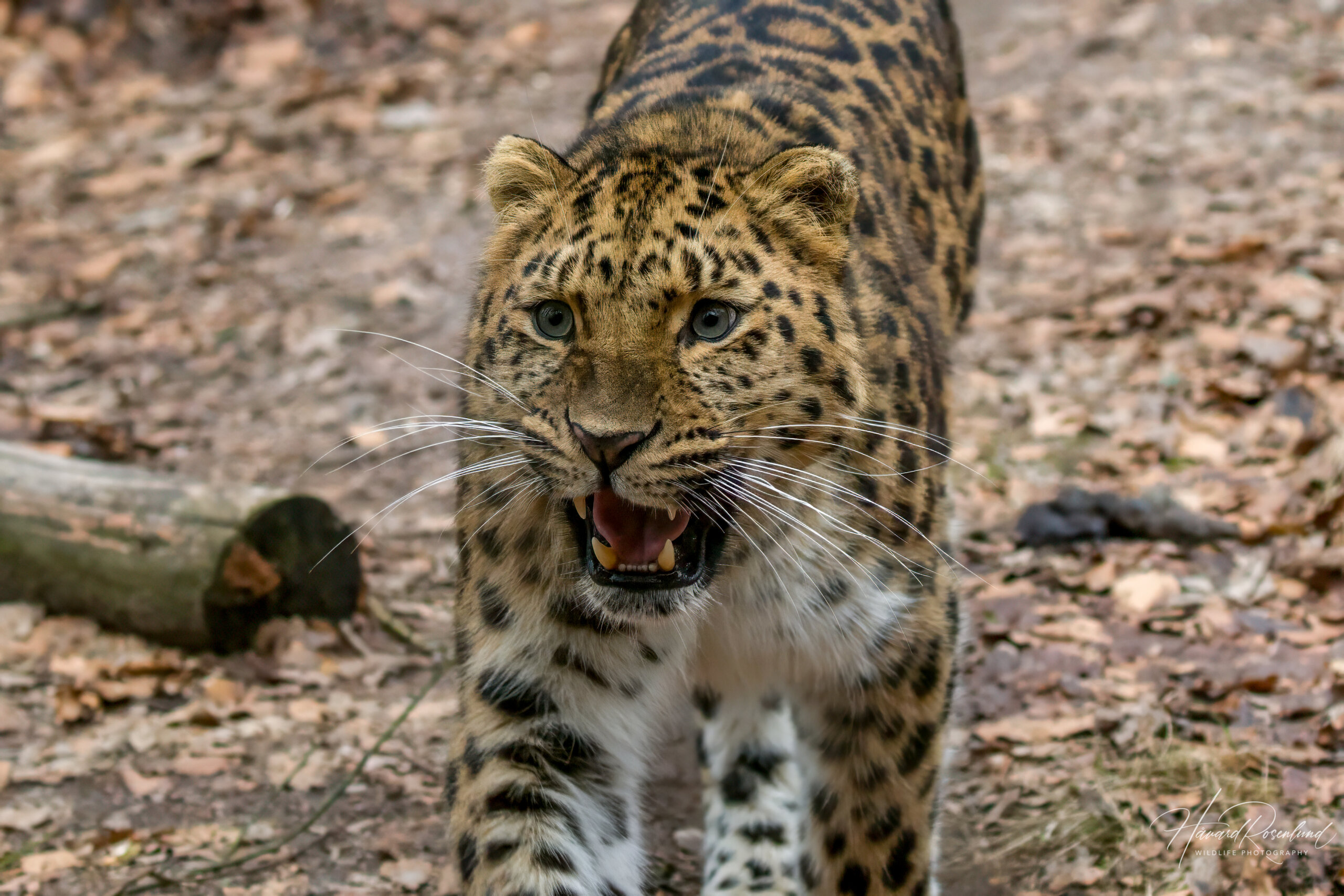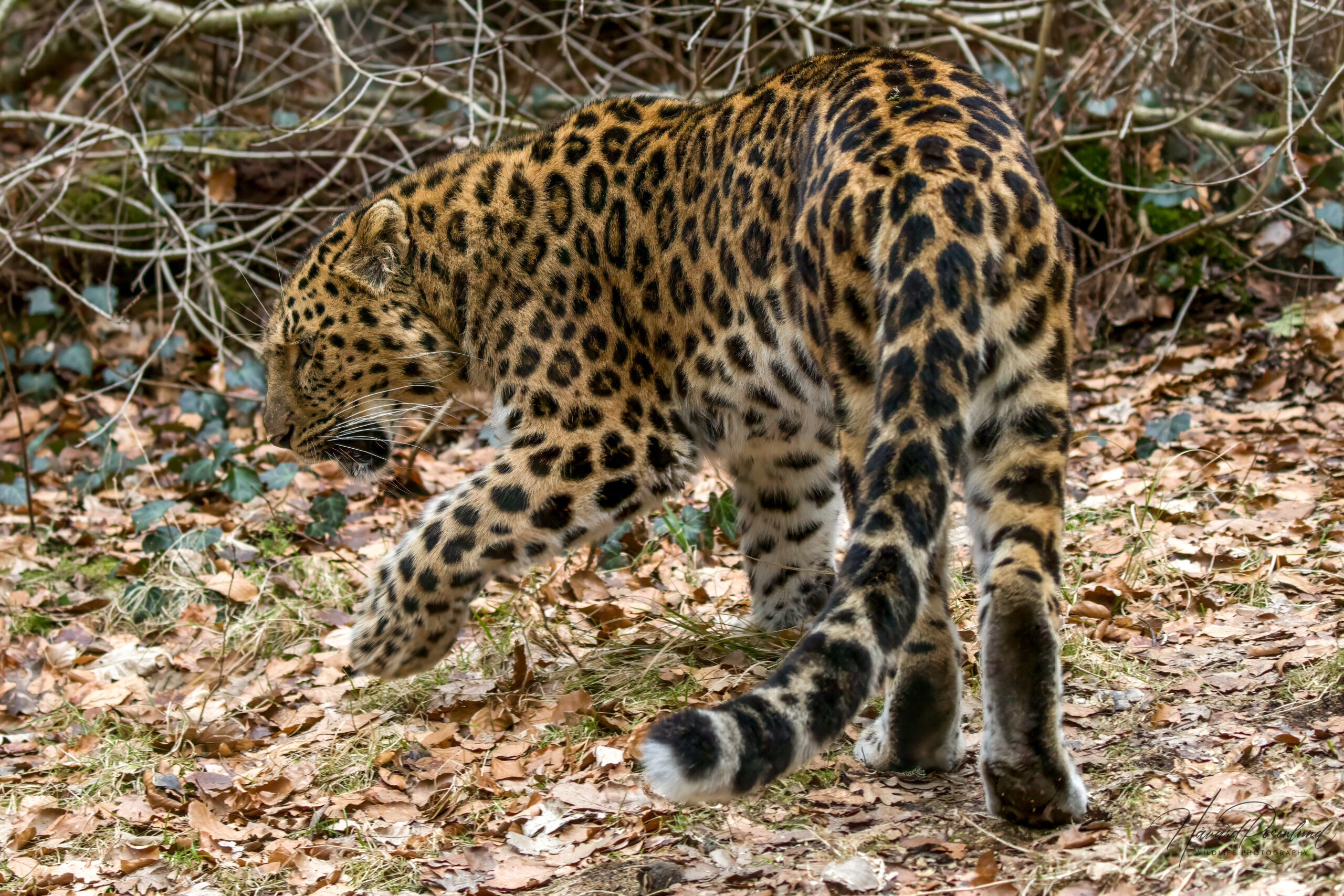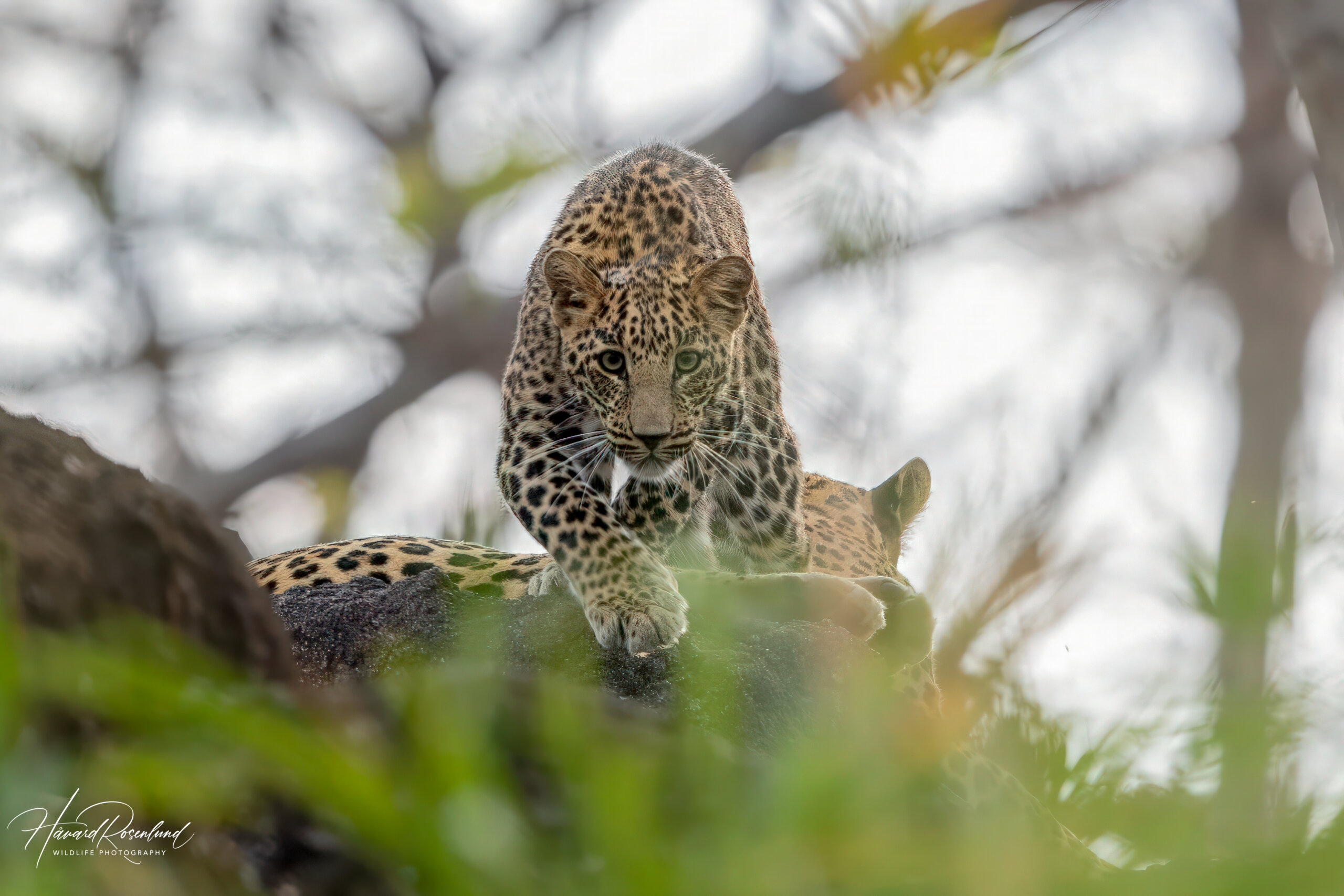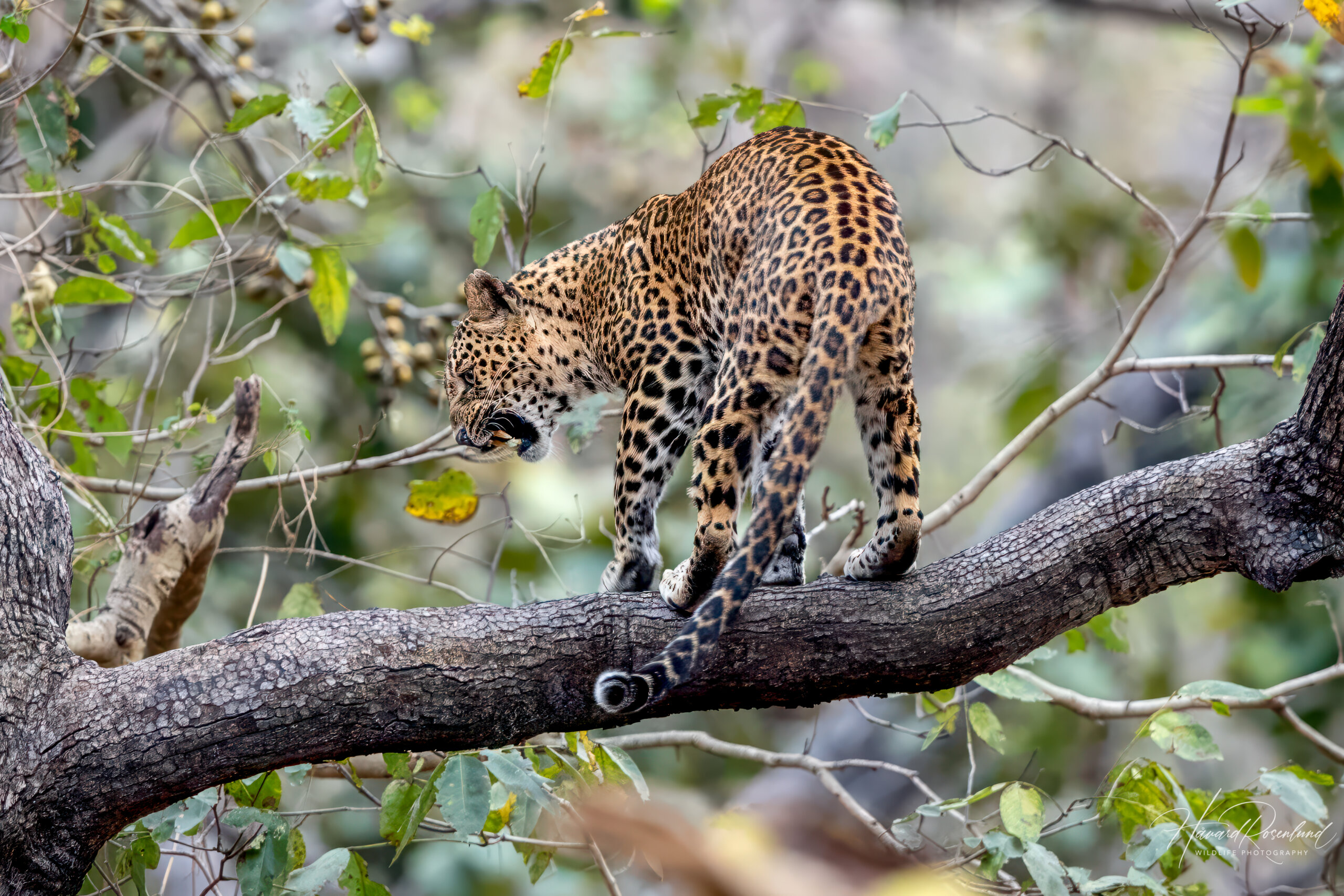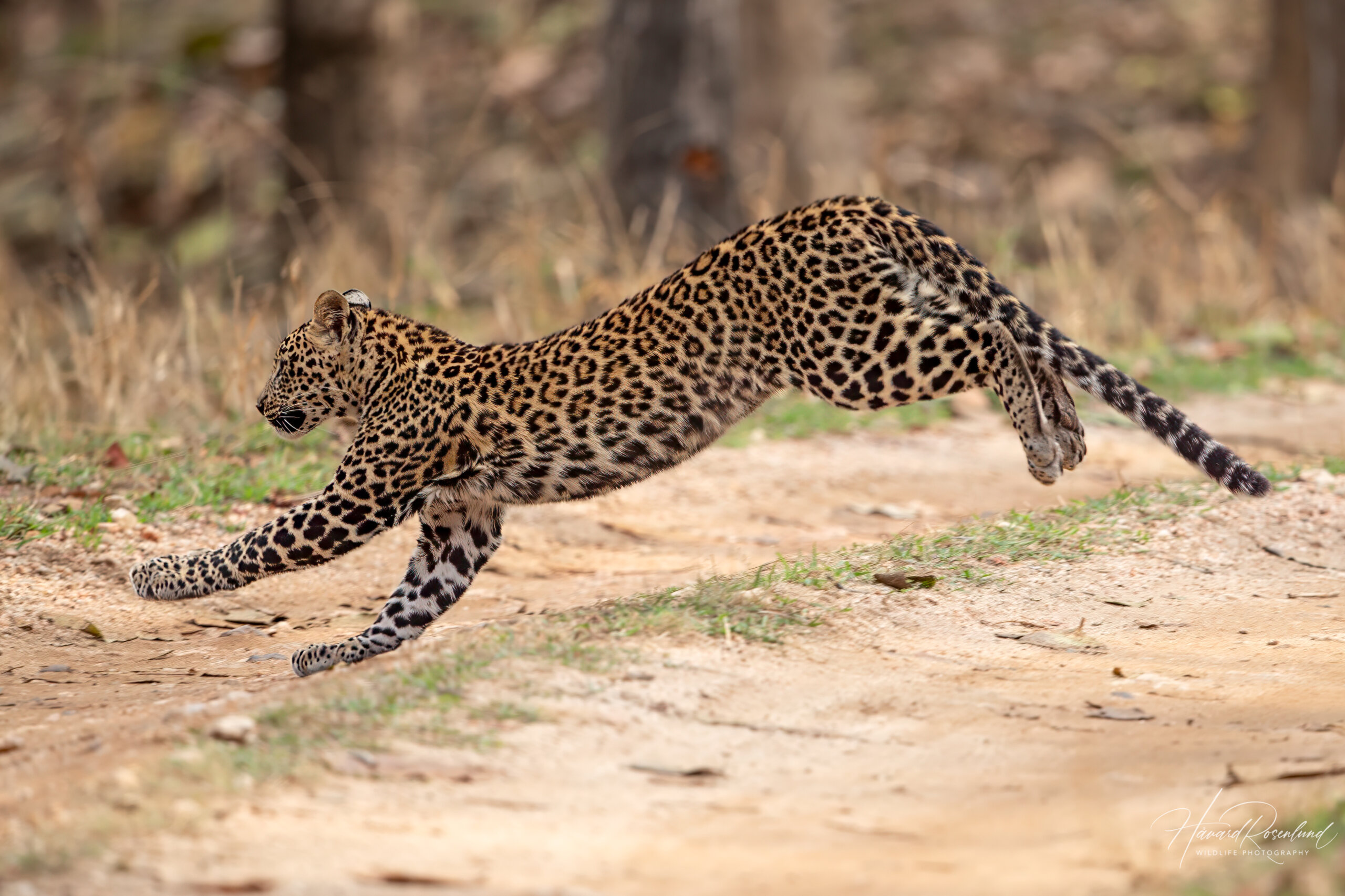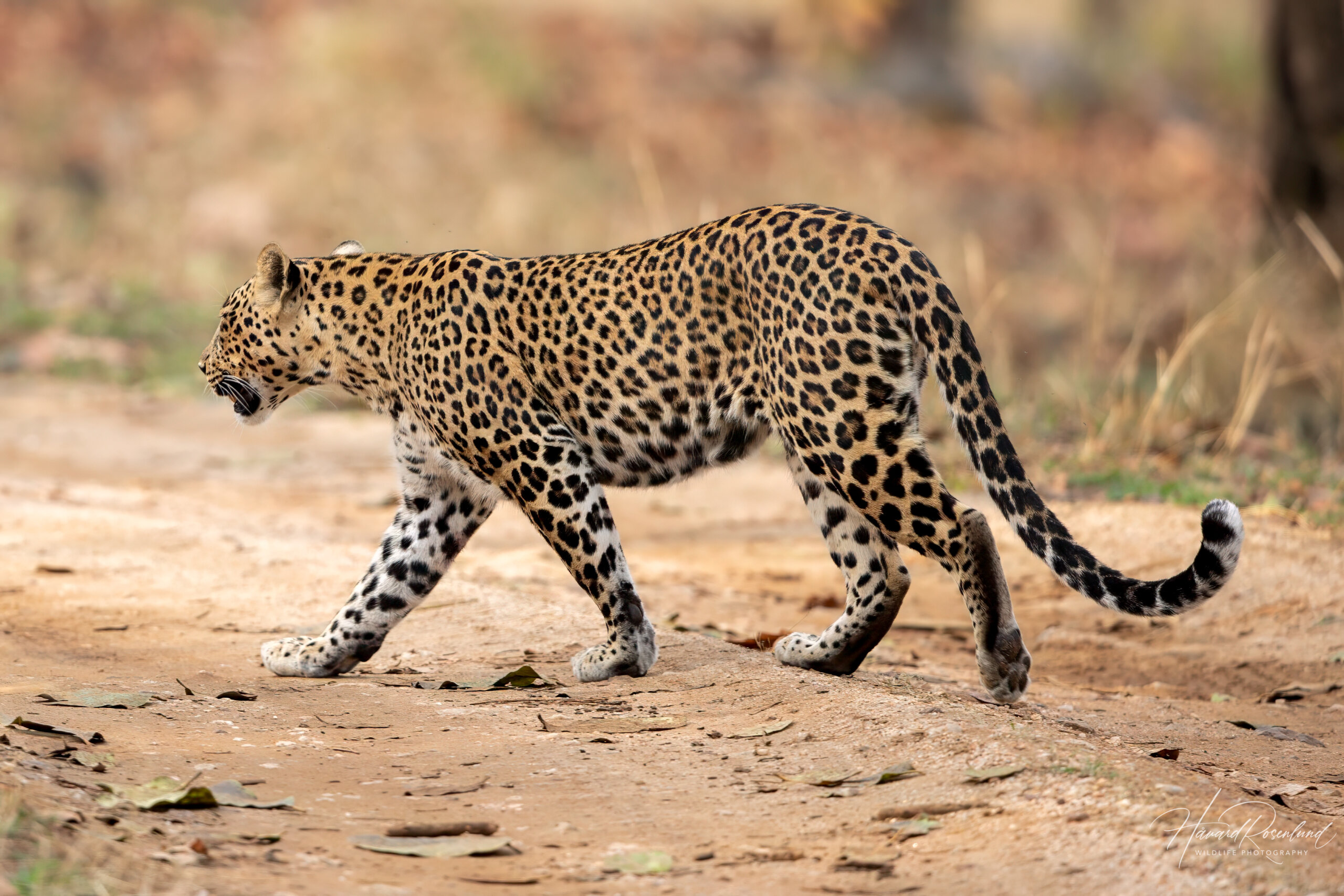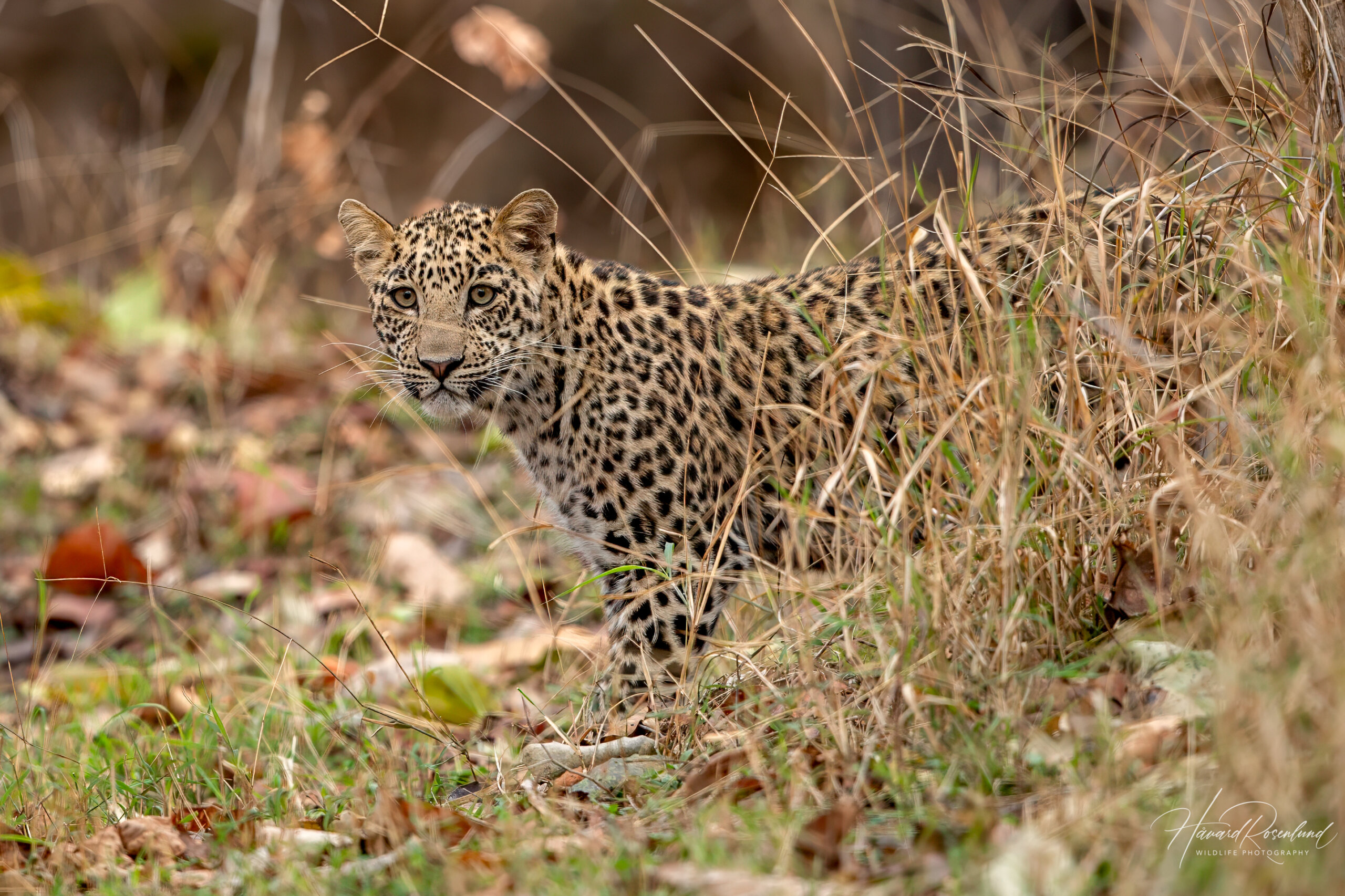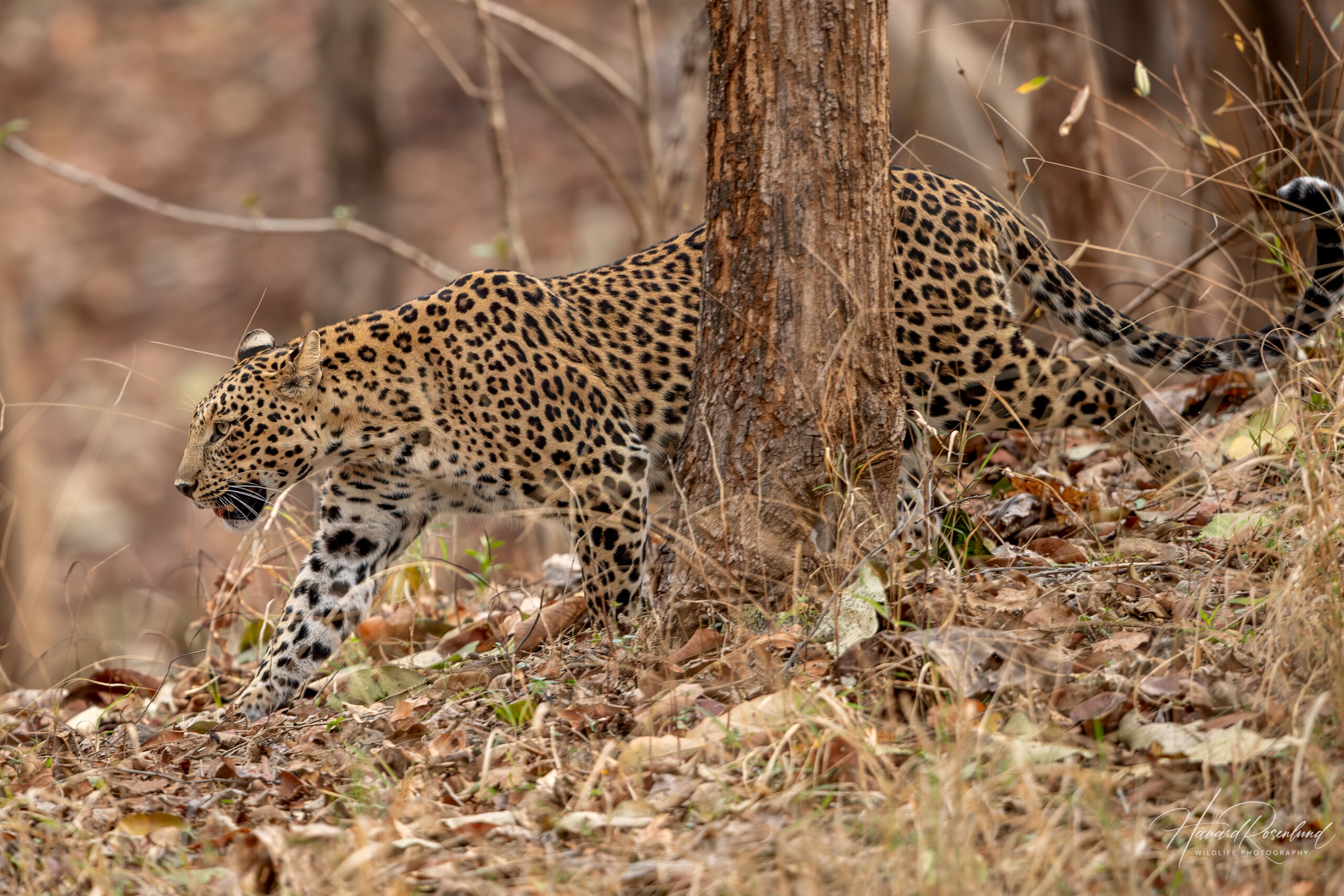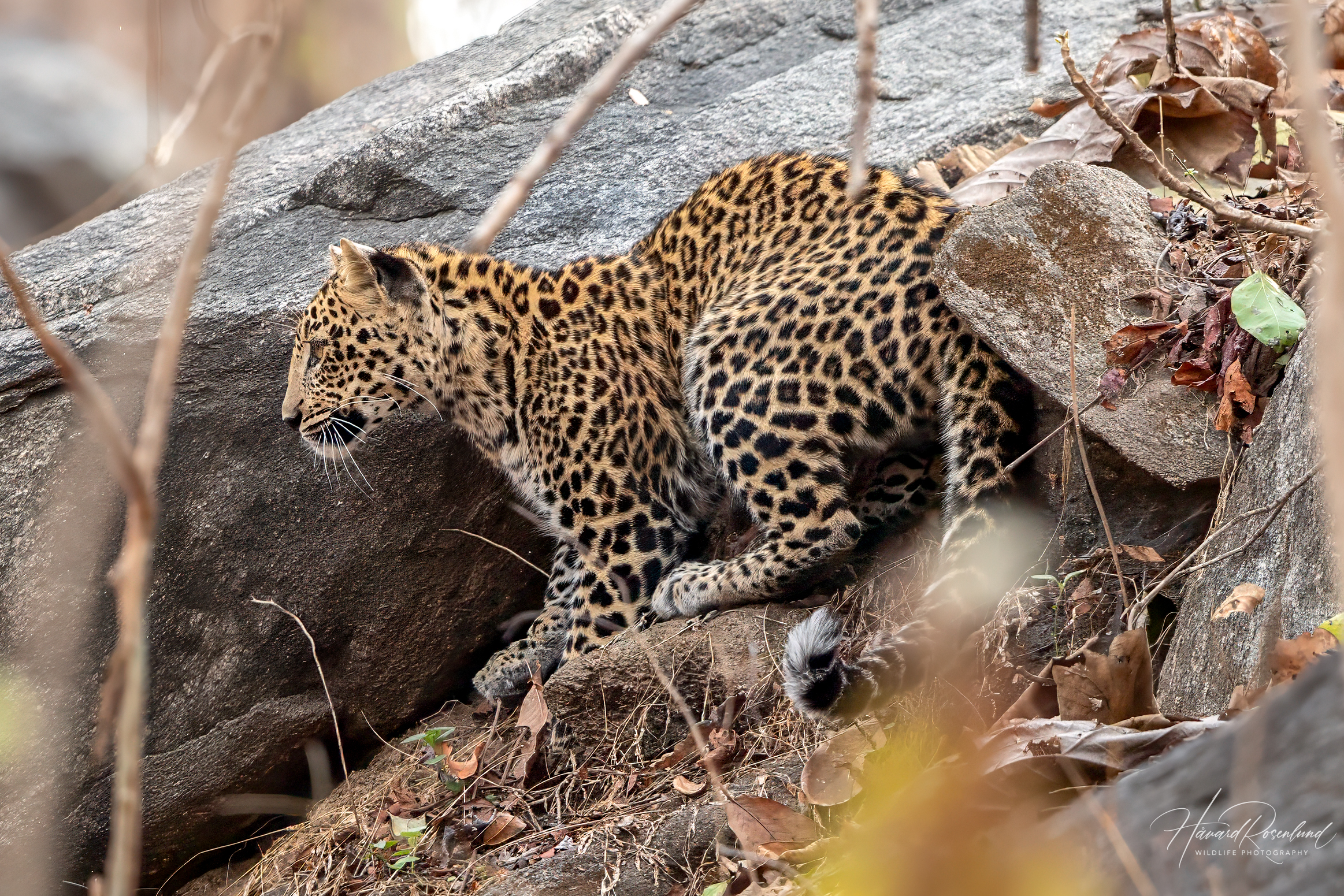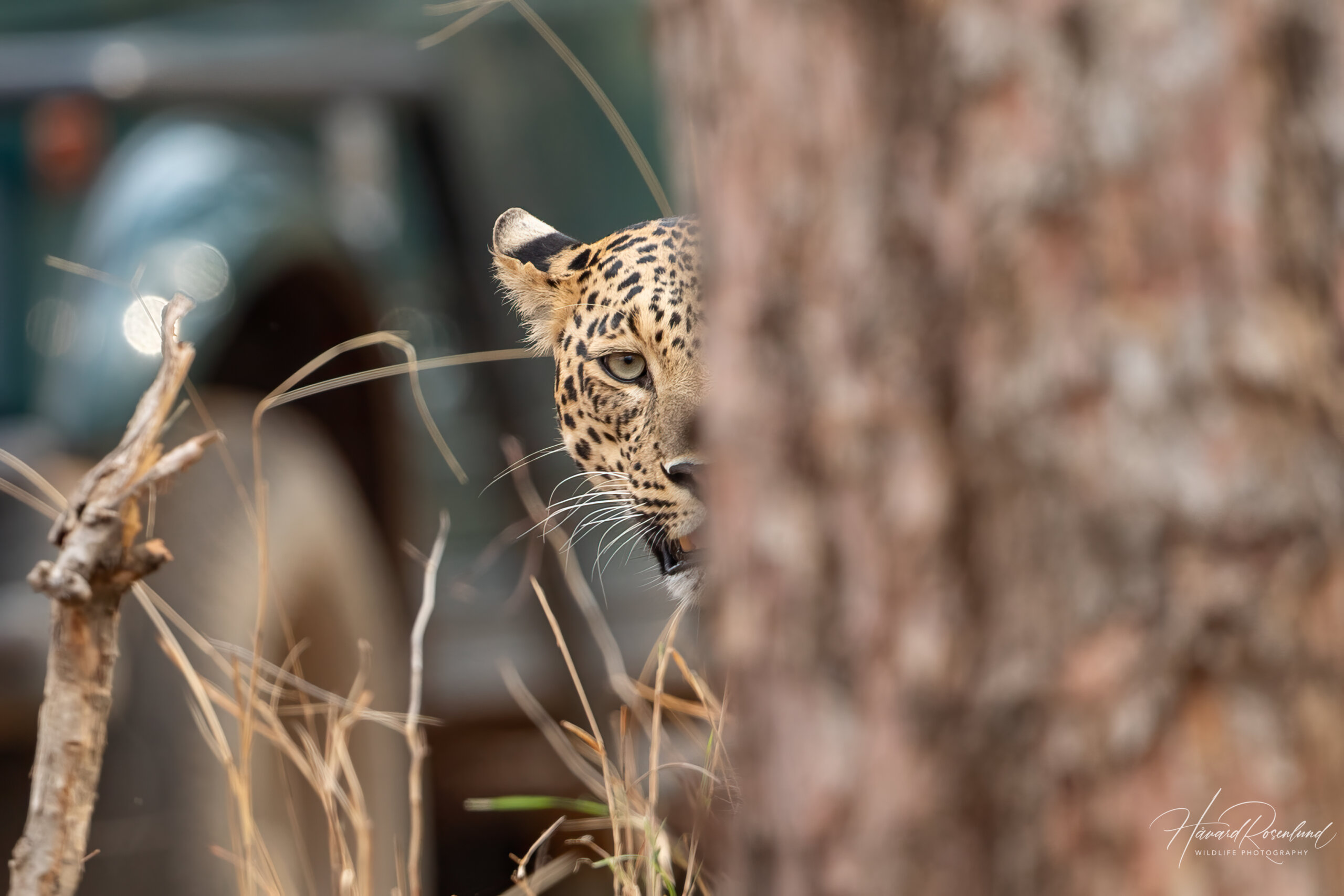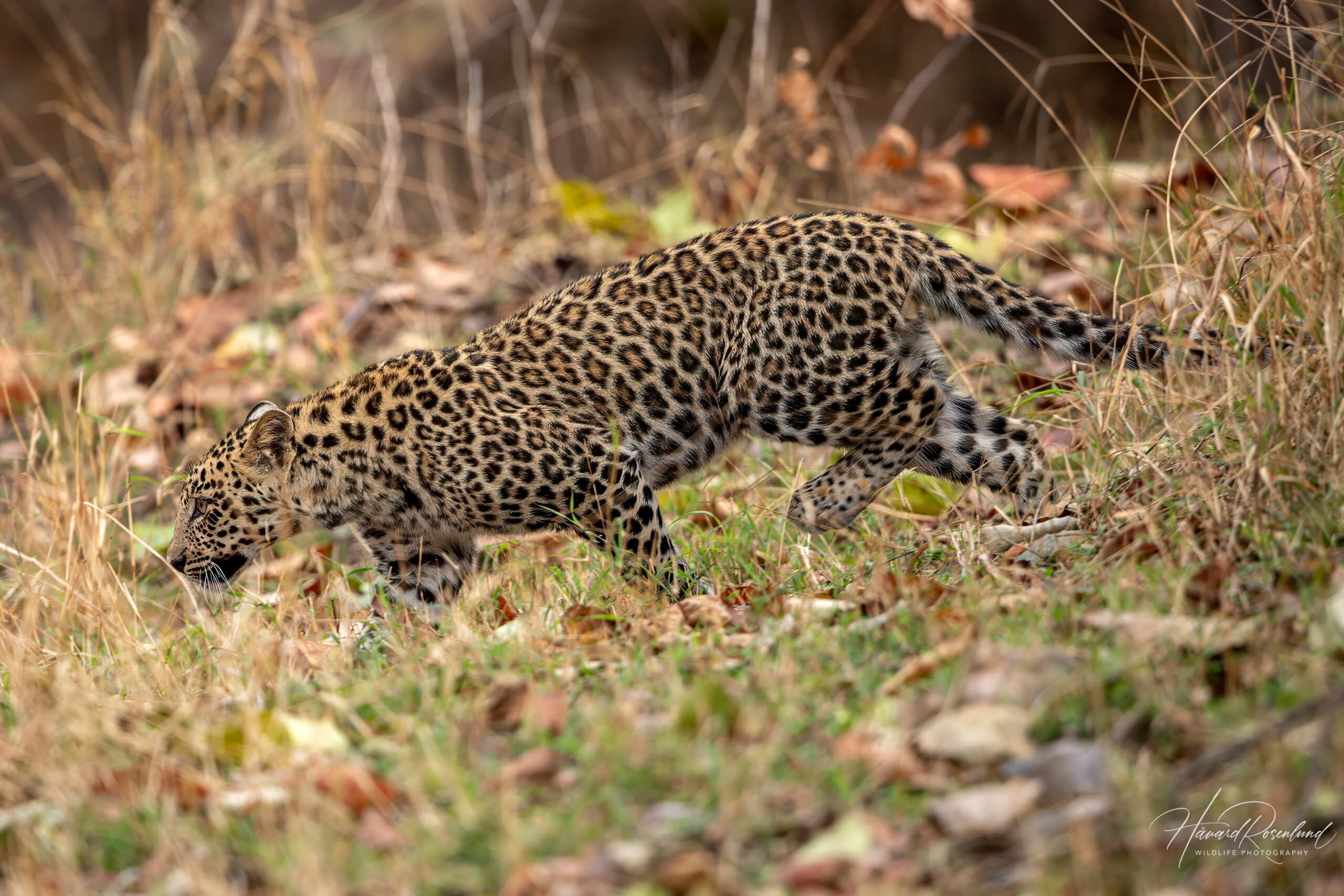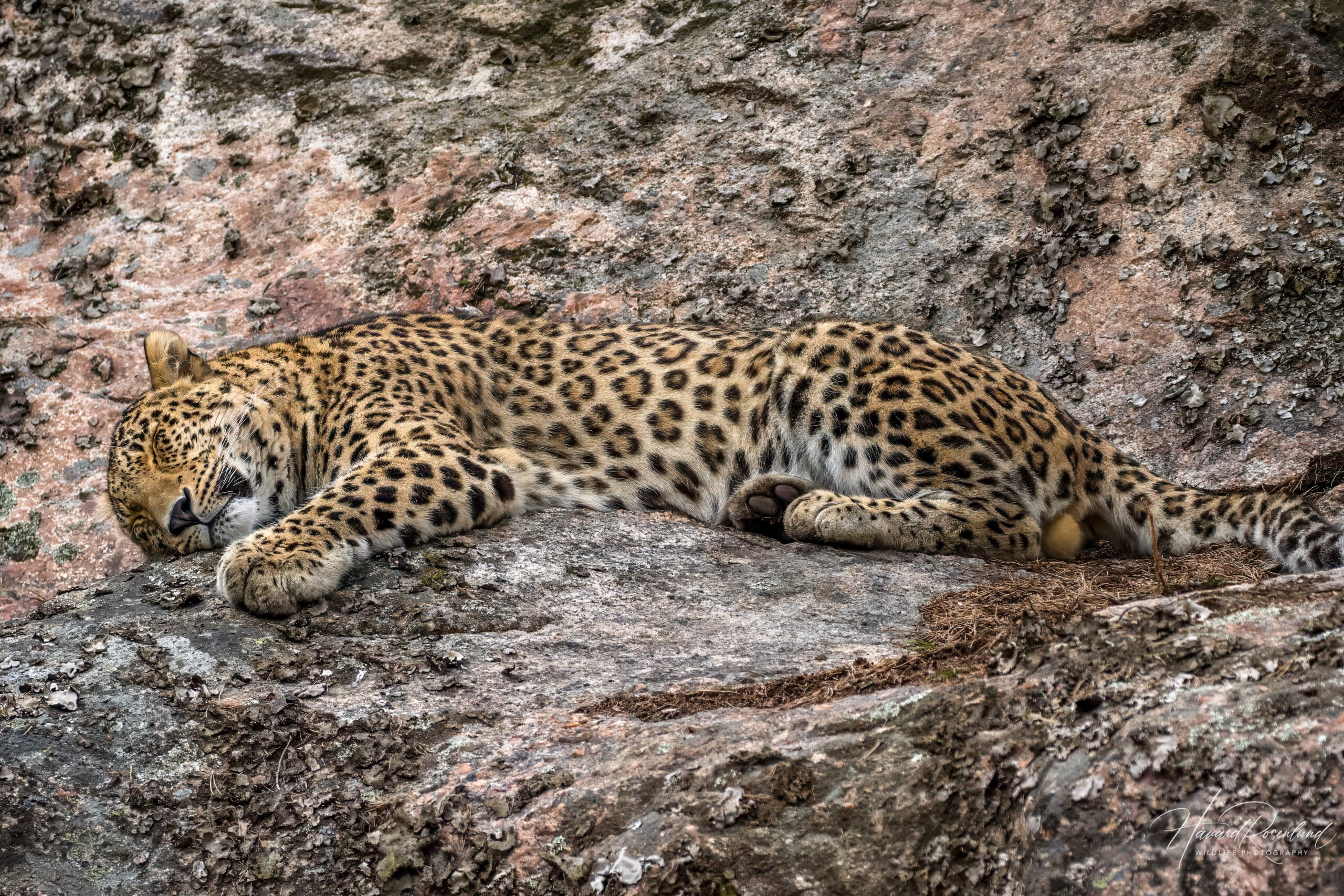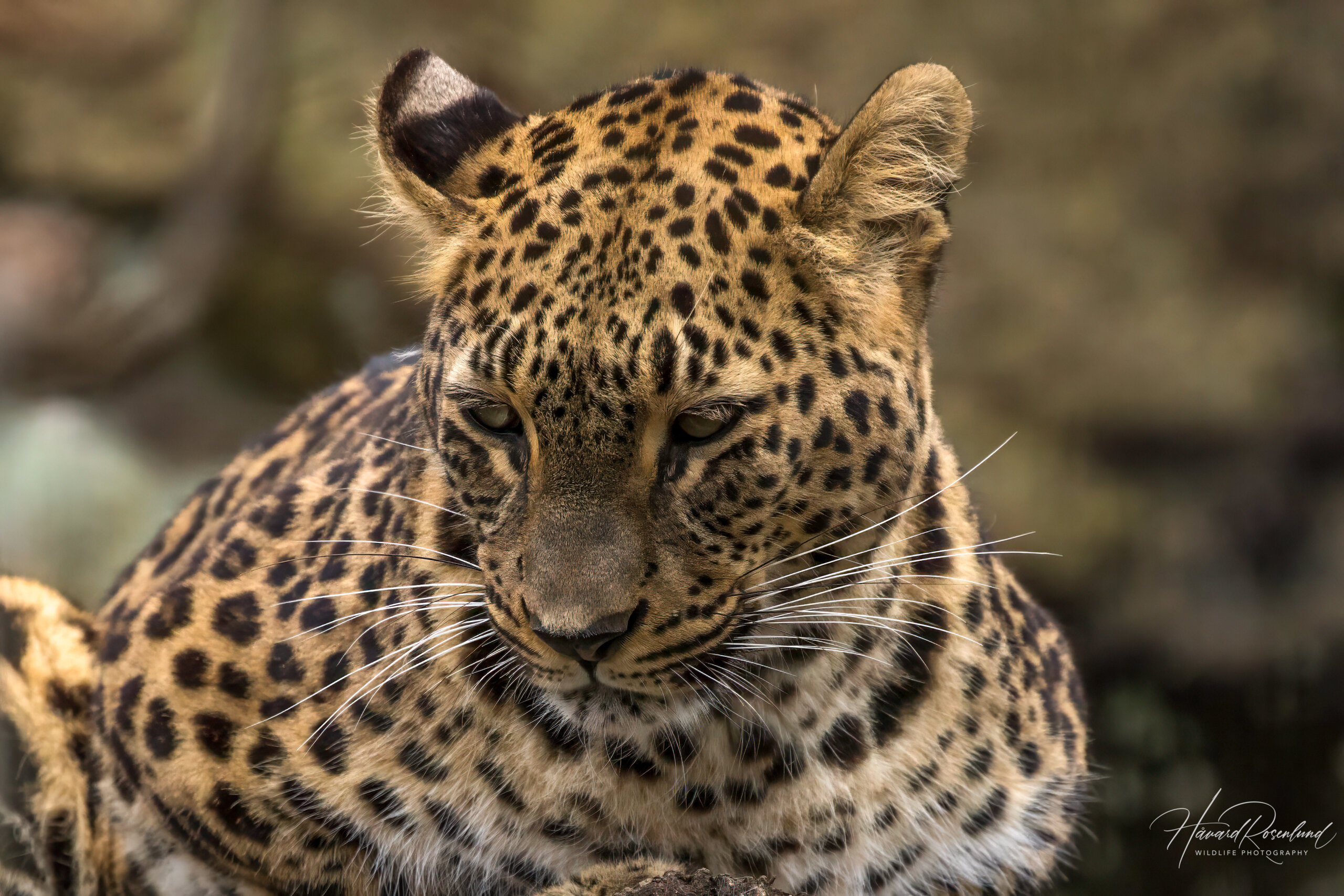Description
The leopard (Panthera pardus) is the most successful and widespread of all big cats. It is highly versatile, an opportunist, and a master of camouflage. The coat varies from light yellow to tawny and is covered with small black rosettes and spots. Some leopards are totally black, and often referred to as black panthers. This color variation is called melanism and happens due to a mutation in the genes. Black leopards are rare but when found they are either at higher altitudes (in East Africa) or in dense rain forests (in Asia). Leopards are found in many different habitats throughout Africa, the Middle East, across Asia all the way to the Russian Far East, from savannas, tropical rain forests and deserts, to mountains and temperate forests. A male is generally 50 % larger than a female and the largest subspecies can reach weights above 90 kg (198 lb.) and a shoulder height of 80 cm (31 in).
Behavior
Leopards are nocturnal, solitary, and spend most of their time active at night. They are extremely elusive and secretive which makes them very hard to find and research, and a sighting is quite often pure luck. This combined with their feeding habits have made them highly adaptable and made it possible for leopards to settle in almost any kind of habitat. They only seem to avoid true deserts and altitudes above the tree line. Leopards can also do quite well close to humans if left alone. Some populations have even turned urban, as seen in cities such as Mumbai and Bangalore in India.
During the day leopards often hide in thick vegetation or relax on sturdy tree branches, preferably in the shade. In some areas where they do not feel sufficiently safe from humans, such as unprotected areas and areas where they have a negative history with people, they are seldom seen in trees as it makes them too exposed. In such areas they often hide throughout the day, and humans living close by might not even know a leopard is present. In large, old, and remote protected areas, such as Kruger National Park, the main threats are lions and hyenas, and the high branches gives them sufficient protection. This is why leopards are more visible in some areas compared to others.
Hunting & feeding habits
Leopards are extremely strong and powerful and can carry large prey the size of giraffe calves up trees. Leopards are not choosy in their diet and have been known to feed on everything from insects up to adult elands, the world’s largest antelope. They are also known to scavenge on rotting flesh. Leopards often hide their prey in trees or in thick bush to avoid other predators, such as hyenas and lions.
Leopards are highly intelligent cats, as can be seen in their hunting strategies. When hunting in daytime hours, typically early morning or late evening, it hunts purely by ambushing, sometimes doing short chases if needed. With speeds reaching 58 km/h (36 mph) it cannot outrun most of its prey, like a cheetah can, and therefore must rely on a stealthier approach. In daytime a leopard usually ambushes from thick bush, behind cover, or from branches in trees. It will also sneak up on prey but will have to get very close to be successful.
At night hunting strategies change, and it uses the darkness to its advantage. It will then use different strategies depending on the situation. If hunting a group of antelope, it has been observed that a leopard sometimes confuses its prey by stumping its foot on the ground to create panic. It will then catch any antelope that gets too close. When hunting a solitary antelope at night a leopard will sometimes use the terrain to its advantage. A leopard was once observed chasing a southern reedbuck. This species of antelope is normally too fast for a leopard, and the cat would never catch it in a standard chase. The leopard instead used its wit and chased the reedbuck in a certain direction. It had anticipated where the reedbuck would run because of the terrain and managed to cut in front of it before catching it.
Here’s a male leopard from Thanda Private Game Reserve. See how he tries to catch a nightjar at the end. Typical opportunist behavior.
Reproduction
A female leopard will get 1-4 cubs after a gestation period of 90-105 days. Cubs are born throughout the year, but birth rates peak in the rainy season. As with other big cats, a male leopard will commit infanticide if he comes across cubs sired by another male to get the female available to mate with him. A leopard male and female will mate every 15 minutes for 5 days.
In the video below I got to follow a mating pair of leopards at night. Here are some things to notice: Check out the size difference between male and female. See how the male uses the Jacobson’s organ in the roof of his mouth to sense if the female is ready to mate by “grinning”. Also, notice how quick the act is. It is over in just a couple of seconds (I barely got my camera back on in time before it was over).
Status
Because of the secretive nature of leopards and their ability to exist unnoticed in several different habitats, even close to human habitation, it is hard to give an estimate on how many leopards are left in the wild. Numbers from 250,000 to 700,000 are cited in various articles and information pages, but no one really knows. It is still a threatened species, and most surveys done show the species declining in numbers across its range. It is listed as vulnerable on the IUCN Red List.
Subspecies
There are nine subspecies of leopard, although a couple are by some considered to be the same subspecies. All nine are assessed individually by the IUCN:
African leopard (P. p. pardus) is the most numerous subspecies, with a population stretching all the way from Egypt in the North to the southern Cape of South Africa. The total number of individuals are unknown and hard to assess. It has seen a great decline in numbers, especially outside of protected areas and is listed as vulnerable.
Indian leopard (P. p. fusca) is the second most numerous subspecies, with perhaps 12,000-14,000 individuals. It is found across the Indian subcontinent. After several extensive surveys this subspecies seems to have increased in numbers in some areas. The total population is believed to possibly be declining in its entirety and it is also listed as vulnerable.
Sri Lankan leopard (P. p. kotiya) is a subspecies found only on Sri Lanka. It is one of the larger subspecies, almost rivalling the Persian leopard in size. Because it only exists on Sri Lanka, the population size is limited, and it is believed to be approximately 750-800 individuals. In some protected areas, with great prey abundance and no competing carnivores, it exist at very high densities (highest of all leopard populations), and they are easy to observe. It is listed as vulnerable.
Javan leopard (P. p. melas) is found only on the island of Java in Indonesia. This subspecies is found in fragmented and small populations across the island. Approximately 300 mature individuals are left and it is listed a endangered.
Persian leopard (P. p. tulliana) is the largest of the leopard subspecies. It is found in southwestern Asia, ranging from eastern Turkey and the Caucasus region in the West, to Afghanistan and possibly Pakistan in the East, with Iran a stronghold for the subspecies. It occurs in low numbers across its range, and it is believed to be between 800 and 1000 wild individuals of this subspecies. It is listed as endangered.
North China leopard (P. p. japonensis) is a subspecies endemic to China. It is believed by many to be conspecific with the Amur leopard (P. p. orientalis), but is assessed as a separate subspecies or population on the IUCN Red List. This leopard has seen a sharp decline in numbers, and now exist only in small and heavily fragmented populations. Efforts to save the subspecies have shown some promise, but with possibly less than 500 mature individuals remaining it is listed as endangered.
Indochinese leopard (P. p. delacouri) was once a highly numerous subspecies ranging across much of Southeast Asia. It was believed to be extant in most of the countries in the region before extensive surveys revealed it to be almost entirely absent from much of its former range. It is likely extinct in Laos, Vietnam and Singapore, and the remaining individuals survive in small, fragmented populations across the rest of the region. Less than 800 individuals are thought to remain, and it is listed as critically endangered.
Arabian leopard (P. p. nimr) is the smallest leopard subspecies, with weights rarely reaching more than 30 kg (66 lb.). It exists on the Arabian Peninsula. It is now mostly confined to heavily fragmented populations in Oman, Yemen, and Saudi-Arabia, with Oman possibly being its last stronghold. It is possibly extant in Israel, but with no observations for some time its presence there is doubtful. There are maybe fewer than 200 individuals remaining in the wild and it is listed as critically endangered.
Amur leopard (P. p. orientalis) is a leopard subspecies found in the far east of Asia, with populations in the Russian Far East, China, and possibly North Korea. With thick winter fur this subspecies is adapted to survive in colder climate than many of the other subspecies. It is by many now believed to be conspecific with the North China leopard, but it is assessed separately by IUCN. This subspecies was on the brink of extinction with less than 30 individuals left. Conservation efforts has seen the numbers now surpass 100 individuals. It is still listed as critically endangered. Combined with the North China leopard its status might change to endangered.
Threats
The leopard is persecuted by man throughout its range. It is prone to get close to human settlements which often leads to human-leopard conflicts. Leopards often kill livestock, and in some instances, even humans if threatened or injured. Normally leopards flee at first sight of human presence, but if it doesn’t see an escape and feels cornered it will attack, and often quite viciously. Uneducated locals will often seek out and kill leopards out of fear or revenge, farmers shoot them to protect their livestock, and poachers kill them for their skins.
Other threats to leopards are habitat loss, deforestation, fragmentations of habitats and a decrease in prey numbers. These factors are connected to human expansion, increase in agriculture practices, livestock outcompeting local prey species, and overhunting of wild ungulate species and primates that are favored prey for leopards. In some areas, a combination of these threats has caused leopard populations to falter and plummet, and some places even disappear altogether, without anyone’s knowledge, as leopard are so difficult to track, monitor and research.











